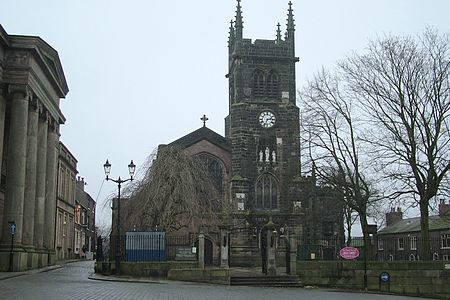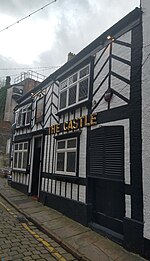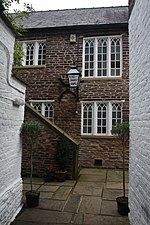St Michael's Church, Macclesfield

St Michael and All Angels Church overlooks Market Place in the town of Macclesfield, Cheshire, England. It is an active Anglican parish church in the diocese of Chester, the archdeaconry of Macclesfield and the deanery of Macclesfield. It forms a team parish with three other Macclesfield churches: All Saints, St Peter's and St Barnabas'. The church is recorded in the National Heritage List for England as a designated Grade II* listed building.A church has been on the site since the 13th century. There have been two major reconstructions, the last being in 1898–1901. Two ancient chapels remain dating from the 15th and 16th centuries. Inside the church are a number of tombs and memorials, mainly to the memory of the Savage and Legh families.
Excerpt from the Wikipedia article St Michael's Church, Macclesfield (License: CC BY-SA 3.0, Authors, Images).St Michael's Church, Macclesfield
Market Place,
Geographical coordinates (GPS) Address Phone number External links Nearby Places Show on map
Geographical coordinates (GPS)
| Latitude | Longitude |
|---|---|
| N 53.2603 ° | E -2.1244 ° |
Address
St Michael's
Market Place
SK10 1HW , Hurdsfield
England, United Kingdom
Open on Google Maps







